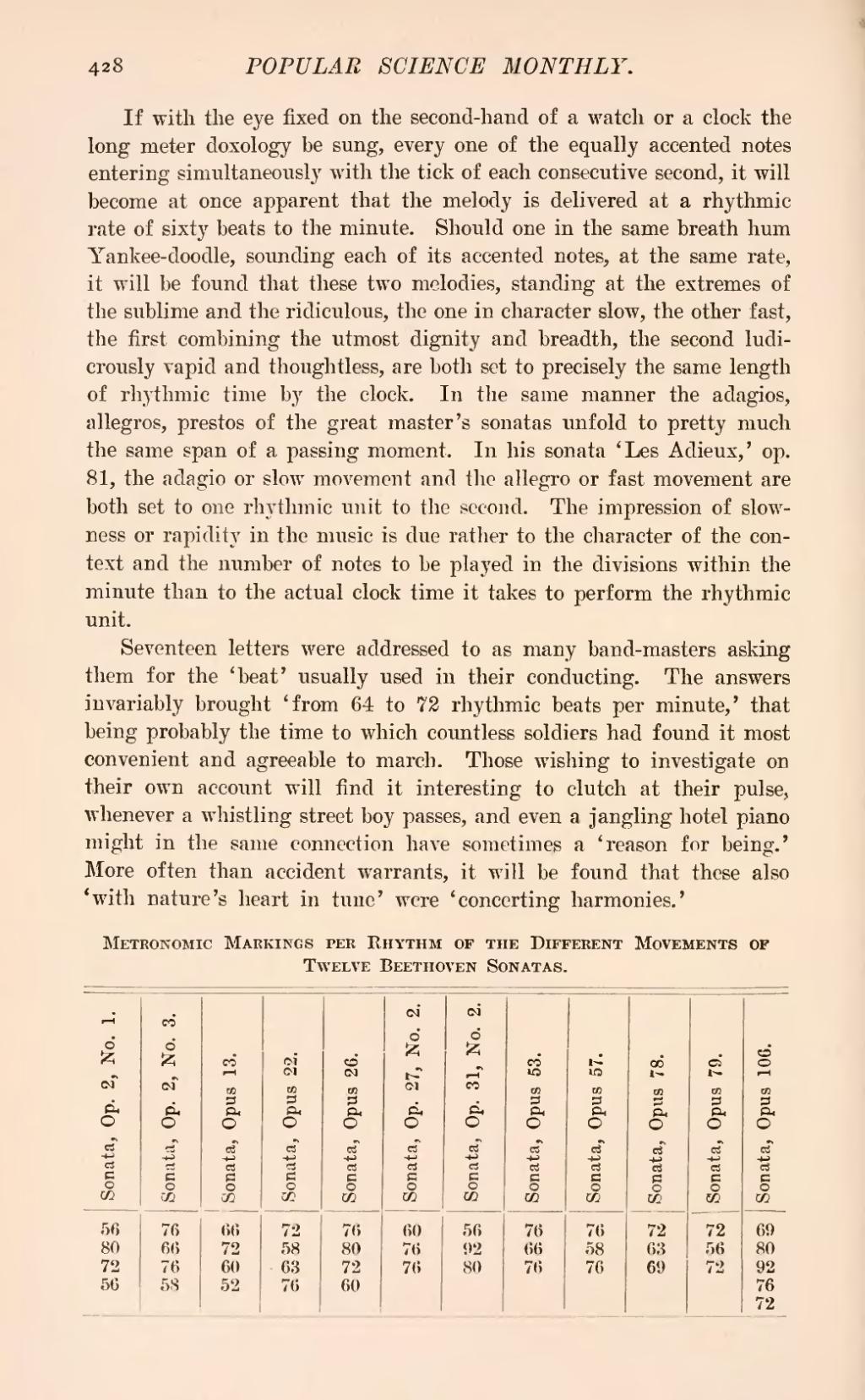If with the eye fixed on the second-hand of a watch or a clock the long meter doxology be sung, every one of the equally accented notes entering simultaneously with the tick of each consecutive second, it will become at once apparent that the melody is delivered at a rhythmic rate of sixty beats to the minute. Should one in the same breath hum Yankee-doodle, sounding each of its accented notes, at the same rate, it will be found that these two melodies, standing at the extremes of the sublime and the ridiculous, the one in character slow, the other fast, the first combining the utmost dignity and breadth, the second ludicrously vapid and thoughtless, are both set to precisely the same length of rhythmic time by the clock. In the same manner the adagios, allegros, prestos of the great master's sonatas unfold to pretty much the same span of a passing moment. In his sonata 'Les Adieux,' op. 81, the adagio or slow movement and the allegro or fast movement are both set to one rhythmic unit to the second. The impression of slowness or rapidity in the music is due rather to the character of the context and the number of notes to be played in the divisions within the minute than to the actual clock time it takes to perform the rhythmic unit.
Seventeen letters were addressed to as many band-masters asking them for the 'beat' usually used in their conducting. The answers invariably brought 'from 64 to 72 rhythmic beats per minute,' that being probably the time to which countless soldiers had found it most convenient and agreeable to march. Those wishing to investigate on their own account will find it interesting to clutch at their pulse, whenever a whistling street boy passes, and even a jangling hotel piano might in the same connection have sometimes a 'reason for being.' More often than accident warrants, it will be found that these also 'with nature's heart in tune' were 'concerting harmonies,'
Metronomic Markings per Rhythm of the Different Movements of Twelve Beethoven Sonatas.

